High up on the sea cliffs and in the mountain villages of Portugal’s golden Algarve is a largely unvisited land that is missed by many of the four million tourists who fly in each year. JAMES RUDDY donned his boots for a wander
 A near-deserted beach on the Fisherman's Walk
A near-deserted beach on the Fisherman's WalkIN An ancient stone barn, a proud farmer, his head adorned by a flat cap and his faithful border collie at his feet, was showing me the copper still where he has created Medronho ‘firewater’ each year from the fruit of the ‘strawberry’ trees that have grown for time immemorial on his land.
He might easily have been a clone of the Irish hill farmer I met in Co. Leitrim six years ago, who had been equally delighted to display his still and the bottles of poteen he had produced from potatoes gathered from his nearby field.
The many parallels are uncanny. Much of rural Irish life is mirrored here by the sturdy and open people who live in the high valleys of the forested Serra de Monchique Mountain range, a tranquil chunk of the Algarve that could be light years from the resorts of the region’s popular south, despite being just 30 miles north.
Their Catholic churches are still busy (the ecclesiastical shops do a healthy trade in Holy Bibles and statues of saints), every inch of the small, terraced farms is planted with trees and healthy vegetables and locals are very enthusiastic at indulging in that Irish idiosyncrasy of chatting with strangers.
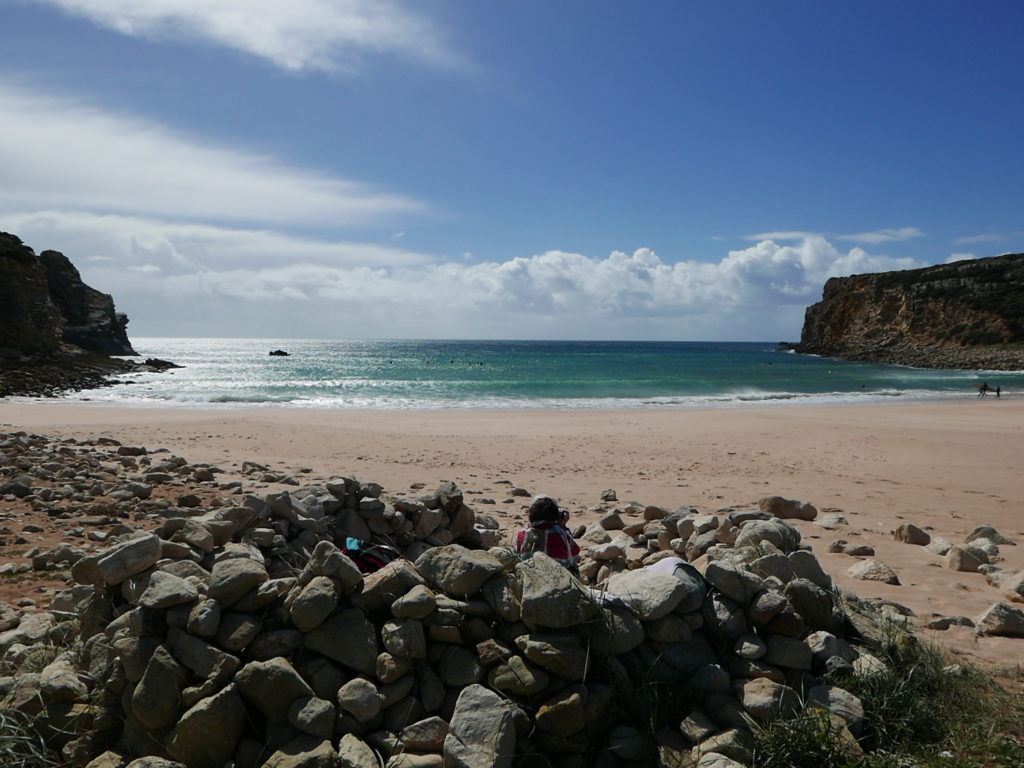 A hiker takes refuge on a deserted beach south of Sagres
A hiker takes refuge on a deserted beach south of SagresAnd, just like in Ireland, these stoical country people have survived eons of foreign invasions, from the Phoenicians 3000 years ago, through the Carthaginians and the very able Romans to the North African and Syrian Moors, who left countless place names and flat-roofed houses for drying almonds and figs – before the Christian Portuguese finally recaptured this rich and beautiful region in the 13th century and created an extensive empire overseas.
If all that upheaval wasn’t enough, there were plenty of coastal raiders to cope with (the British and marauding Sir Francis Drake being among them) and the 8.7-magnitude quake in 1775 which killed thousands and, along with the subsequent tsunami, flattened ancient buildings everywhere.
Of course, the most recent invasion has been the 1960’s mass tourism that coincided with the opening of the international airport at the regional capital, Faro. This boom created the buzzing sheltered resorts as far as Portimao and Lagos, where so many of us have enjoyed the glorious southern beaches, luxury hotels, golf courses, international cuisine and more than a couple of pints of great Guinness.
But travel just a few miles west and you find another world: empty coves with sweeping horseshoe beaches fringed by wind-blown surfing waves, as well as whitewashed hamlets with snack bars bursting with flavoursome dishes, packed with fresh herbs, fruits and the ubiquitous succulent meats, seafood and fresh fish.
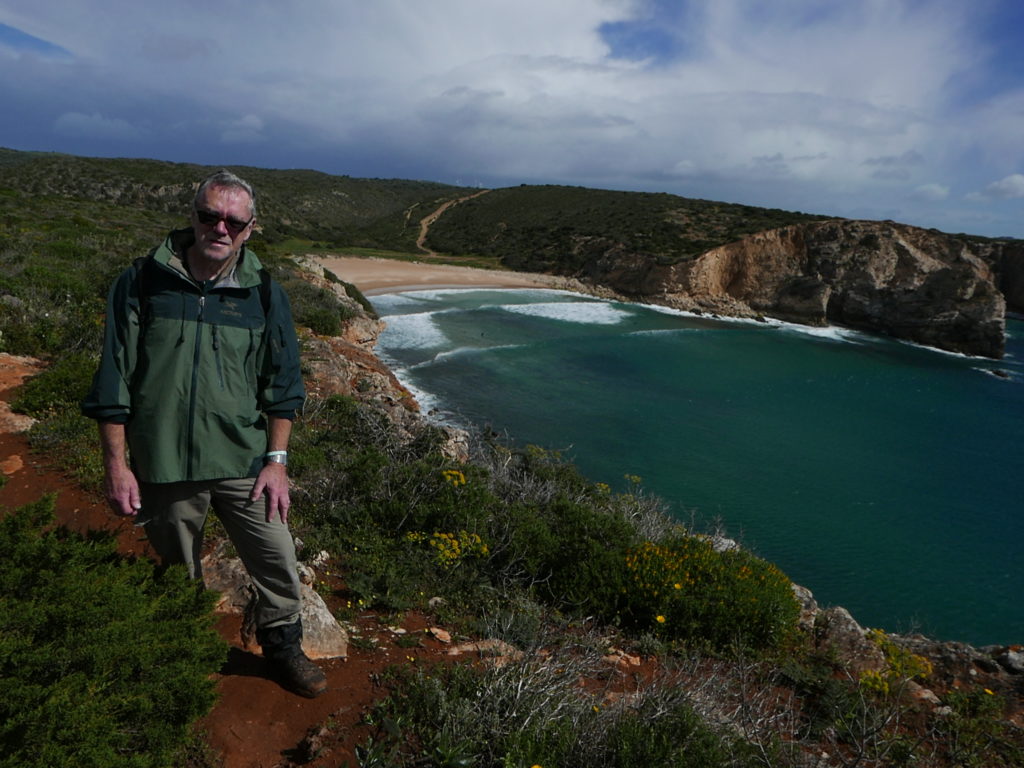 James on the cliffs south of Sagres
James on the cliffs south of SagresAnd such expeditions are now simple to arrange whether you want to cycle, e-bike, kayak or, like me, slip on your boots and hit the region’s extensive range of long and short-distance walking trails.
My hiking guide was locally born and bred Francisco Samoes, whose ecotourism company, Algarvian Roots, offers a wide range of trips, from our three days of hiking to such diverse options as food and pottery workshops, birdwatching, and nature trails.
With an encyclopaedic knowledge of the region and fierce pride in its beauty and protection, the 29-year-old took me on three varied hikes, including the most challenging section of the Fisherman’s Trail - part of the Rota Vicentina route - and widely regarded as one of the world’s finest coastal treks, It stretches, in 13 stages, for 140 miles along the west coast from Sines to Lagos.
Starting at the remote and ‘edge-of-the-world-like’ village of Sagres, the walk took us along 12 miles of wind and ocean carved limestone cliffs, packed with wild blue orchids, yellow gorse and wildlife, including at least one peregrine falcon who rose from the bracken apparently hunting for pigeons.
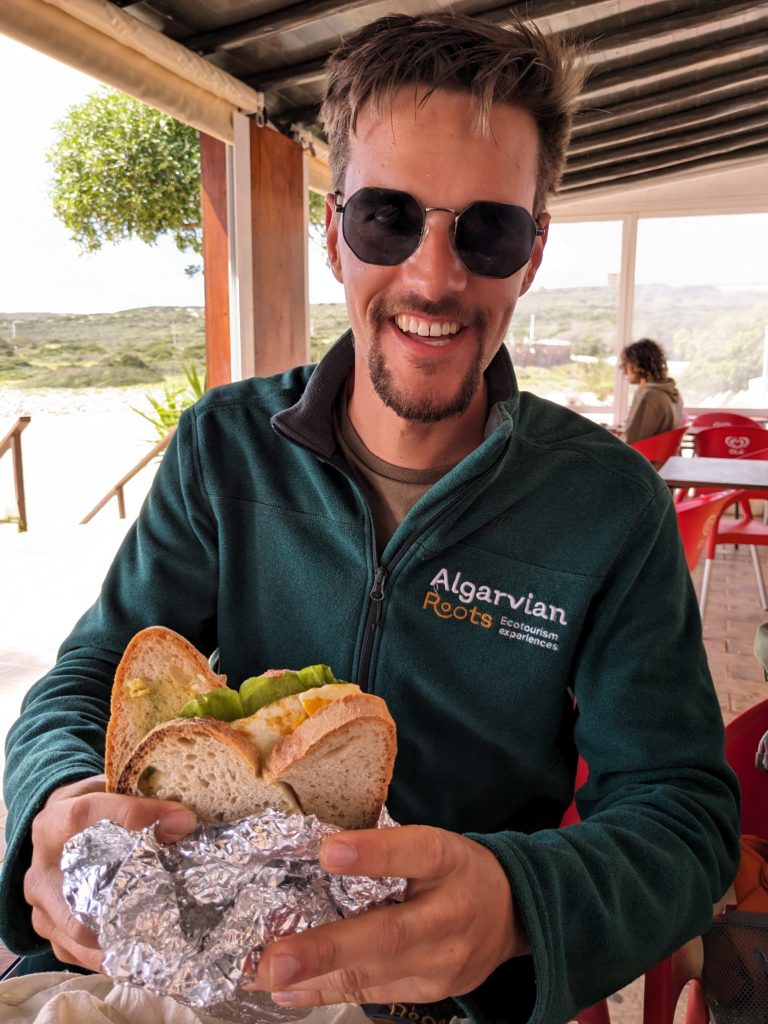 Francisco with his grandmother's sandwich
Francisco with his grandmother's sandwichAround half-way we stopped for a snack and, from his backpack, Francisco extracted two giant sandwiches of his grandmother’s home-made bread, as well as lettuce, free-range fried eggs and avocado spread – all produced on the family farm near Silves.
Cannabis-puffing surfers, fellow hikers, friendly locals on short walks with children and dogs were among our company before we reached our endpoint, Salema, the pretty laid-back resort where fishermen still use Roman-style pot amphorae and you can admire the footprints of dinosaurs who crossed the path 250 million ago.
Before this, our first walk was a gentle 8-mile circular tour from the quaint village of Bordeira to its unspoilt beach and surrounding hills, followed by a sumptuous traditional pork and orange meal at the local café, where old men drank endless coffees and children played football in the street outside.
When we completed our trio of treks – the lofty 5-mile Vegetable Garden tour round the Monchique hills – we enjoyed a well-earned meal of oven-cooked wild boar in the popular Luar da Foia mountain restaurant on the edge of the market town.
As we downed the succulent casserole, I felt I had tasted the real Algarve, the rugged cliffs and verdant hills and valleys, as well as meeting some of the people who have shaped its culture for millennia.
My joy and knowledge over the experience was largely thanks to Francisco’s heartfelt insights about his homeland, both in its the beauty and its hardships.
Last year, he visited Donegal on a holiday and loved every minute. “Somehow,” he told me, “it felt like I was at home again. The natural beauty, the people and the humour felt so good. But, maybe, the weather was just a little different!”
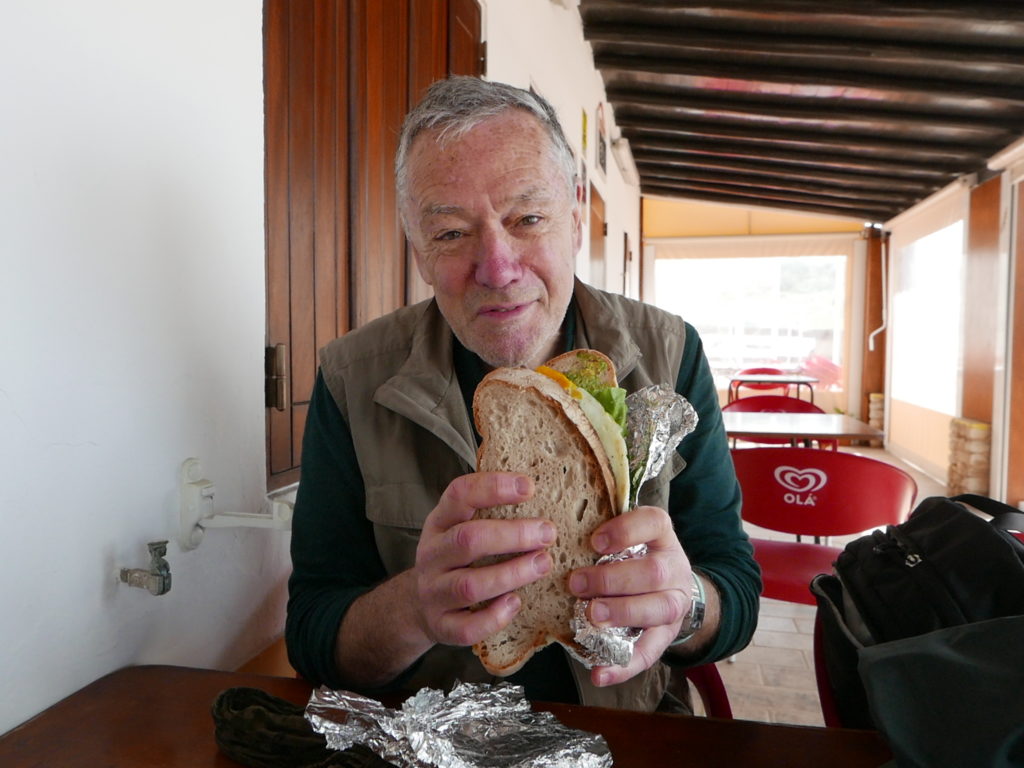 James with his 'grandmother' sandwich
James with his 'grandmother' sandwichFact file
Guides and tips to the region: https://visitalgarve.pt/en/
Walking and other tours and workshops, try Algarvian Roots - https://algarvianroots.com/
For general walk information: www.rotavicentina.com and www.viaalgarviana.org
Accommodation
For historic, clifftop Sagres accommodation, try Pousada Sagres - https://www.pousadas.pt/pt/hotel/pousada-sagres?utm_source=google-my-business&utm_medium=organicsearch&utm_campaign=pousada-sagres&tc_alt=114036
For Faro’s trendy and central Cardeal Suites&Apartments, go to www.cardeal.pt
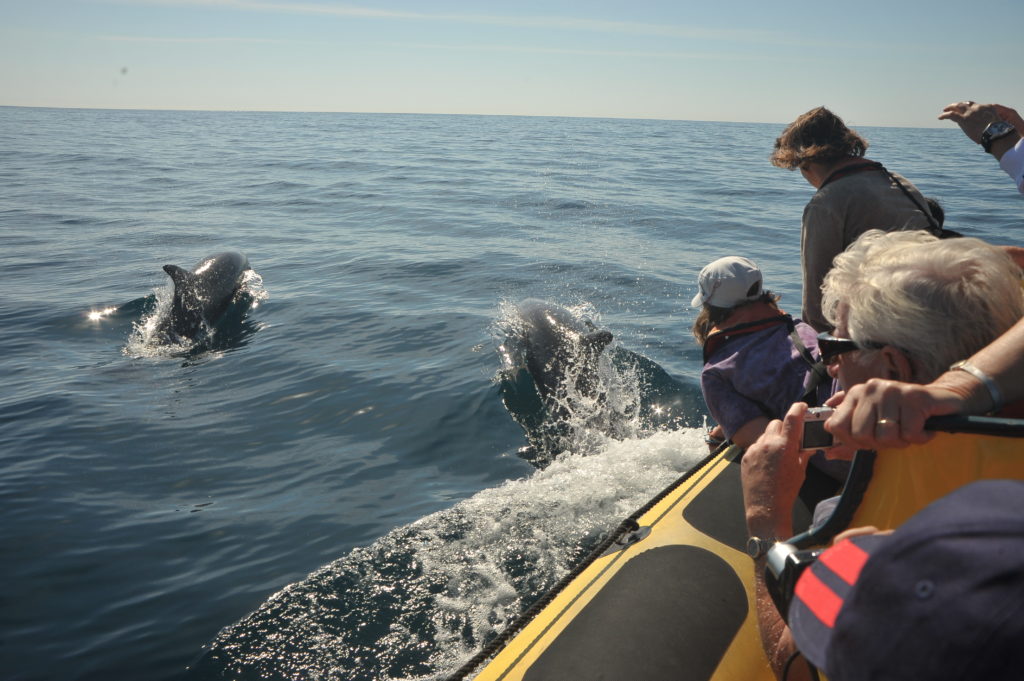 Dolphin-watching off Albufeira
Dolphin-watching off AlbufeiraPS
Just for a contrast, I also spent a couple of days in Faro and enjoyed some of the high octane holiday time with which the Algarve has long been synonymous.
That included a boat trip from Albufeira for dolphin-watching and a few minutes inside the famous Benagil Cave (with its hole in the roof), where there can be 30 boats queued up in high summer (Dolphin Watching & Benagil Cave Tour from Albufeira | Dream Wave Algarve)
Also, I took a lively big wheel buggy tour (Quad Tours, Buggy Tours and Jeep Safaris in the Algarve (algarveriders.com)and even spent a day watching the MotoGP motorcycle races at Algarve Motorsports Park.
Based at the calm and central Cardeal Suites and Apartments (www.cardeal.pt), my favourite experience ‘down south’ was a walk round Faro Old Town and breakfast at a back street pastelaria com fabrico proprio (where, as the name suggests, they make everything from scratch).
I was dirercted there when I inquired at a nearby shop and the owner, a lady in her seventies, took me by the hand and walked me down the street where she introduced me to the owner.
He served up the most amazing ham and cheese corn bread sandwich with a pastel de faro (almonds, egg cream and floss with chocloate) washed down by a divine cappucino.
Now, that’s the kind of old-style charm and service you might find in Connemara!

